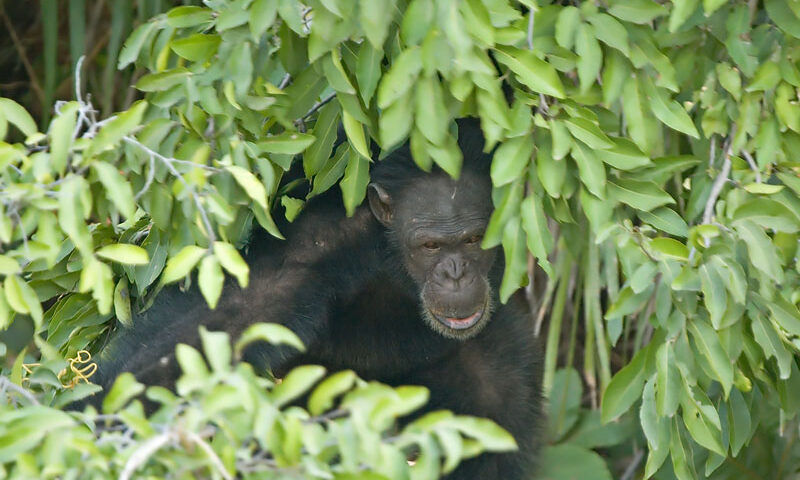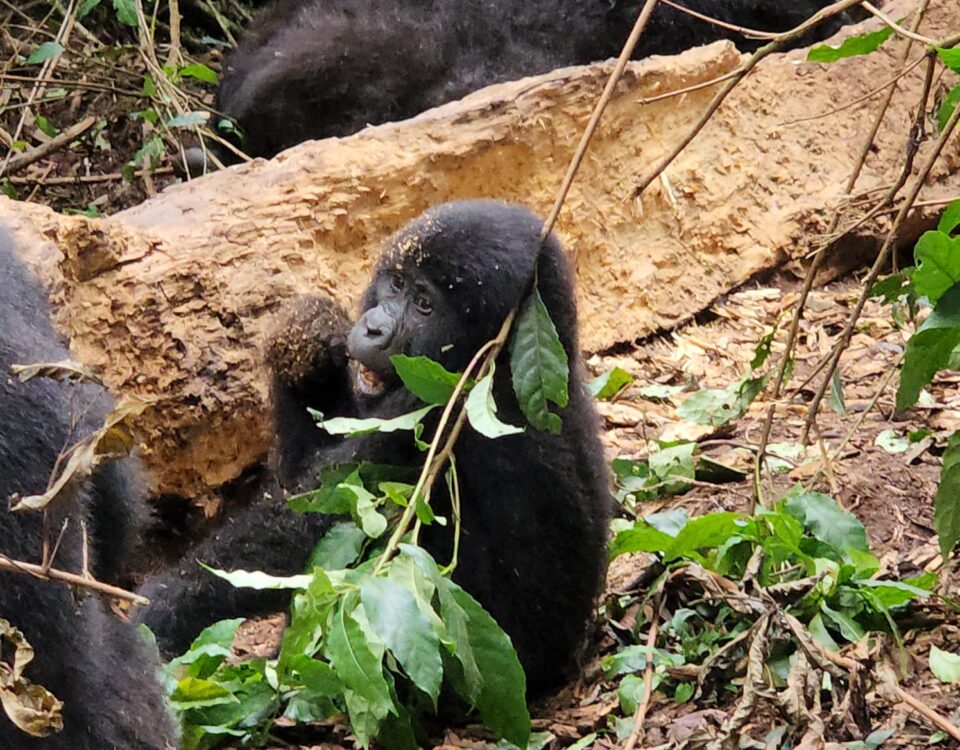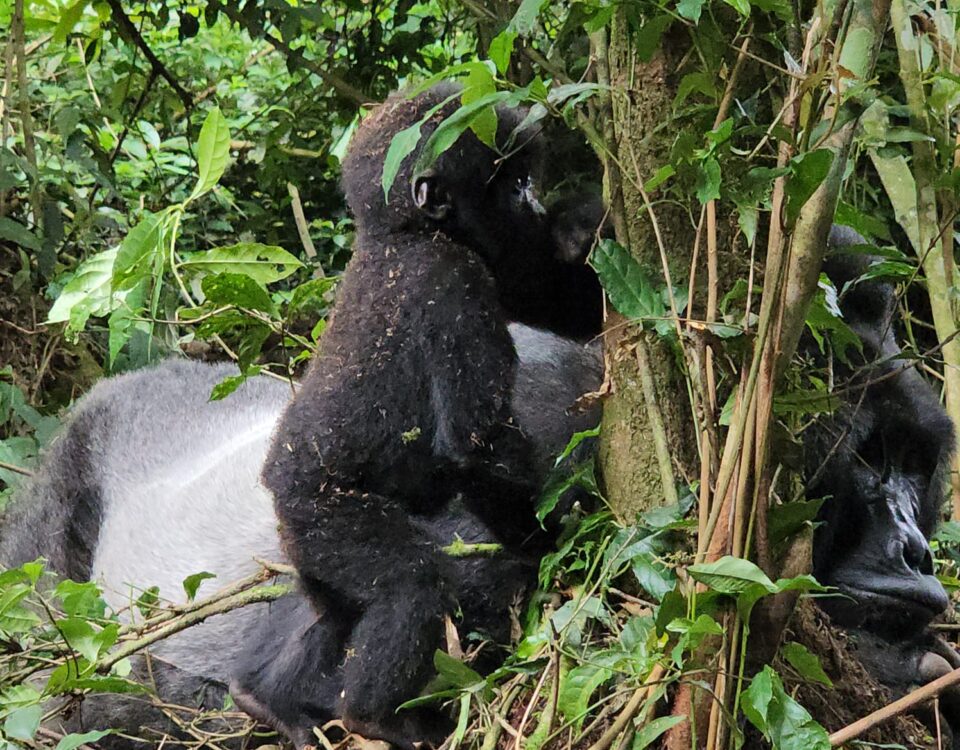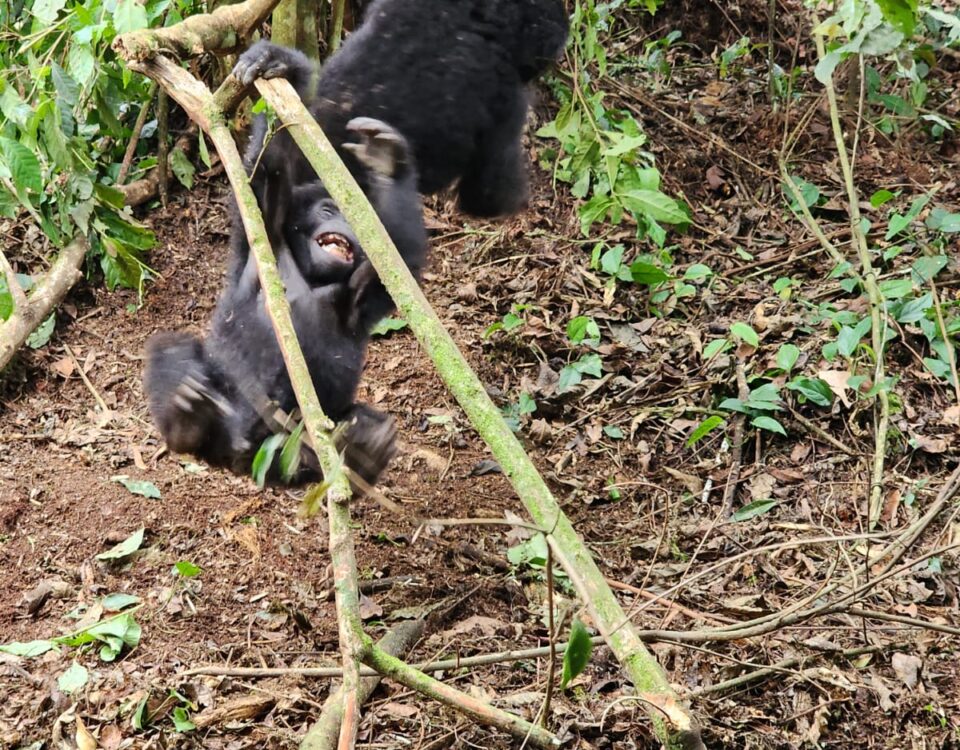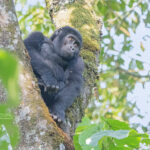
Are the Gorillas in Rwanda Habituated for Human Contact?
April 2, 2025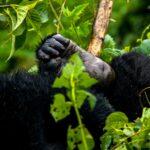
How Far Can I Trek to See the Gorillas in Rwanda?
April 2, 2025How Many People Are Allowed to Trek with a Gorilla Family at Once?
How Many People Are Allowed to Trek with a Gorilla Family at Once? Gorilla trekking in Rwanda is one of the most popular wildlife experiences on the planet. The chance to see the magnificent mountain gorillas in their natural habitat is an experience that attracts travelers from around the world. However, while it’s a thrilling adventure, it also comes with certain rules and regulations designed to ensure both the safety of the gorillas and the visitors. One of the key questions many travelers ask before embarking on a gorilla trekking experience is: How many people are allowed to trek with a gorilla family at once?
In this article, we’ll explore the specific guidelines for group sizes in gorilla trekking, why these rules are in place, and how they contribute to the overall conservation efforts of Rwanda’s endangered mountain gorillas. The aim is to provide clarity on what you can expect when you take part in this extraordinary wildlife experience in Rwanda.
Best Uganda Rwanda Safari Packages
Group Size: The Standard Limit for Gorilla Trekking
The maximum number of people allowed to trek with a single gorilla family at any given time is eight visitors. This rule is strictly enforced by the Rwanda Development Board (RDB), which oversees gorilla trekking in Volcanoes National Park. The decision to limit the number of trekkers to eight is based on several important factors, including the health and well-being of the gorillas, the preservation of their natural behaviors, and the overall visitor experience.
Allowing too many people to approach the gorillas at once could lead to unnecessary stress for the animals. Gorillas, like all wild animals, are sensitive to their environment, and large groups of people could disturb their natural behavior, making them feel threatened or unsafe. By limiting the number of people in each group, it ensures that the gorillas are not overwhelmed by the presence of humans, thus preserving their natural lifestyle.
This eight-person limit applies to each gorilla family, and it is part of Rwanda’s broader effort to maintain a balance between conservation and sustainable tourism. In the past, larger groups of visitors were allowed, but this policy has been adjusted to improve the trekking experience for both the gorillas and the tourists.
Why the Limit of Eight Trekkers?
The rule of limiting trekking groups to eight people per gorilla family may seem small, but it serves several important purposes. Understanding why this limit exists can help you appreciate the thoughtfulness behind it and enhance your overall trekking experience.
- Minimizing Stress on the Gorillas: Gorillas are naturally wary of humans, even when habituated. A large group of people can cause stress to the gorillas, which could potentially lead to behavioral changes or even aggression, especially from the dominant silverback. To ensure the safety of both visitors and gorillas, it’s important to keep the group small and manage the interaction carefully.
- Preserving Natural Behaviors: Mountain gorillas, even when habituated to human presence, must be able to continue exhibiting their natural behaviors. A smaller group allows the gorillas to behave more naturally without the distraction of too many observers. They can go about their daily activities—such as foraging, grooming, and socializing—without feeling rushed or interrupted by human activity.
- Enhancing Visitor Experience: The small group size also improves the overall visitor experience. With fewer people, trekkers can get a more personalized and intimate encounter with the gorillas. Instead of jostling for space or trying to get the perfect photo, you have the opportunity to observe the gorillas in a calm and peaceful environment. This intimacy adds to the magic of the experience, making it more memorable and meaningful.
- Improving Safety: Smaller groups are also easier to manage from a safety perspective. When trekking through the dense jungle, it is important to ensure that the group can move easily and follow instructions from the guide. Larger groups can become chaotic, increasing the risk of injury or disruption to the trekking process. Smaller groups are easier to supervise and ensure that all participants are safe while maintaining an orderly and controlled atmosphere during the trek.
How Are the Groups Organized?
When you book a gorilla trekking experience in Rwanda, you will be assigned to a specific gorilla family. The group size of eight is strictly adhered to for each family, and the groups are often split up based on the fitness levels and preferences of the trekkers. Here’s how the group assignments typically work:
- Trekking Permits and Group Allocation: Each trekkers’ permit grants access to one of the habituated gorilla families in Volcanoes National Park. The Rwanda Development Board (RDB) is responsible for assigning groups, and this is done with careful consideration of the trekkers’ needs and the condition of the gorilla families.
- Fitness Levels and Trekking Difficulty: Some visitors may have a higher level of physical fitness, while others might prefer a less strenuous hike. When booking a trekking experience, you can usually specify your fitness level. Based on this, you may be assigned to a particular group that is either easier to reach or requires more effort. The difficulty of the trek is not only determined by the physical fitness of the trekkers but also by the location of the gorilla family within the park.
- Choosing the Family: The Rwanda Development Board keeps a close watch on the location of each habituated gorilla family. Based on the location of the group on the day of your trek, you may be assigned to a particular family. This allocation is also done based on the availability of permits and the group sizes, ensuring that no family is overcrowded.
- Role of the Guide and Rangers: Each trekking group is accompanied by an experienced guide and a team of rangers who are well-versed in the behavior of the gorillas. The guides ensure that the group maintains the proper distance from the gorillas (at least 7 meters) and that no one is disrupting the animals. They also educate trekkers on the do’s and don’ts of trekking to ensure that the gorillas remain safe and stress-free.
Benefits of a Small Group Size
The small group size of eight people per trek not only benefits the gorillas but also enhances the overall experience for the visitors. Here are some of the advantages of trekking in a small group:
- More Space to Observe: With fewer people in the group, everyone has more room to move around and better sightlines to observe the gorillas. This leads to a more immersive and enjoyable experience. You won’t be distracted by crowds, and you’ll have more time to appreciate the behavior and interactions of the gorillas.
- Better Interaction with the Guide: In a smaller group, it’s easier to engage with the guide, ask questions, and learn more about the gorillas. Guides can provide more detailed information and answer individual questions without being overwhelmed by a large group.
- A Sense of Intimacy: Trekking in a small group creates a sense of intimacy that enhances the experience. Being among a small group of like-minded individuals adds to the magic of seeing these incredible animals up close and provides an opportunity for shared moments of awe and appreciation.
- Improved Environmental Impact: Small group sizes help reduce the overall environmental impact of tourism. Fewer people means less disturbance to the natural habitat of the gorillas and other wildlife. The goal is to create a sustainable form of tourism that doesn’t compromise the integrity of the park and its ecosystems.
Conclusion: Why the Small Group Limit is Essential
In conclusion, the limit of eight trekkers per gorilla family is an essential regulation for gorilla trekking in Rwanda. It ensures the safety and well-being of the gorillas, preserves their natural behaviors, and provides a better experience for tourists. It also plays a critical role in sustainable tourism and conservation efforts, generating the revenue needed to protect the endangered mountain gorillas and their habitats.
By respecting these guidelines, visitors help to maintain the delicate balance between tourism and conservation, allowing future generations to experience the awe of seeing mountain gorillas in the wild. So, whether you are a seasoned traveler or a first-time trekker, the small group size ensures that your gorilla trekking experience will be one to remember for a lifetime.

